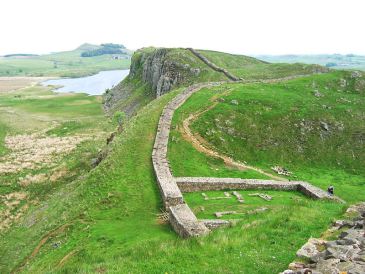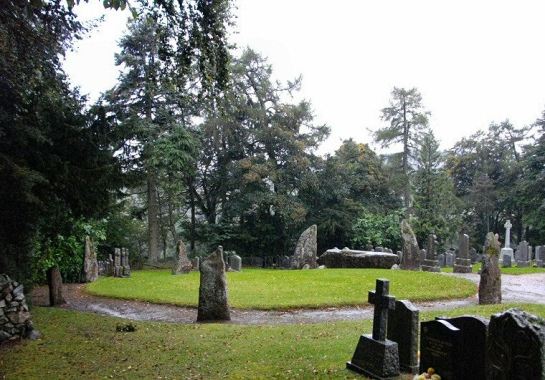 This post is by Nancy Jardine.
This post is by Nancy Jardine.
I’m fascinated by everything I read about the Winter Solstice, the natural occurrence that’s happening this very day as I publish this blog post. Living in Aberdeenshire, Scotland, which displays traces of civilisations dating back thousands of years can be humbling for me at this time of year…and sometimes a tad confusing as to all of the possible historical meanings and traditions surrounding the Winter Solstice.

I’ve recently completed a very engrossing 6 week course with Newcastle University on Hadrian’s Wall, the 73 miles long Ancient Roman Frontier monument built around AD 122 which bisected Britain into those dominated to the south and the untamed barbarians to the north. Part of the course was about Ritual and Religion along the Wall. Though the Winter Solstice wasn’t specifically mentioned, many of the soldiers manning the Wall would most likely have celebrated it in some way since it was common practice across Europe for those soldiers of Celtic/Druid origin. The troops who came from Mediterranean lands, which had long been Romanised, might also have celebrated the Winter Solstice as part of their Roman Saturnalia celebrations which straddled the Winter Solstice.

Over the Roman occupation of the Wall, approximately 300 years, the troops who were stationed there worshipped many different deities though from monument and gravestone evidence we know that the Roman soldiers sometimes adopted a local Celtic god or goddess. Sometimes they even created a composite new goddess by double- barrelling the name, similar to Sulis Minerva- who was worshipped at the Roman Baths in Bath, England.
I’d love to know how they celebrated the solstices because their ceremonies might have been very different!
What fascinates me a lot about history is how people adapted to new religions and practices and the fact that it was a very gradual process, depending on the geographical setting. By the 4th Century there’s evidence on Hadrian’s Wall for Christian worship. That doesn’t mean that all of the soldiers along the frontier were converted to Christianity but by AD 393 the Emperor Theodosius made the Christian religion the official one across the Empire, and a law prohibited the public worship of any non-Christian religious practice across the Empire.
Did that mean that celebrations of the Winter Solstice no longer took place after AD 393 in Roman Britannia? It’s a great question! But I doubt it. What seems to have happened is that commanders of the Roman forts would have been duty bound to impose penalties if soldiers (and by then also their families) openly continued their non-Christian practices, though some commanders who hadn’t themselves become Christian converts may have turned a blind eye.
Who knows how quickly Christianity might have been adopted across Britannia if the Romans hadn’t withdrawn from the island in approx. AD 410? In actuality, it took hundreds more years for Christianity to be accepted, especially in the barbarian north of the Wall…yet some of the ancient traditions are still adhered to, though in renamed forms.

The barbarian land mass we now call Scotland held on to many variations of pagan traditions, only gradually intermingling them with Christian ones. The sacred ancient standing stone circles, which are dotted around Aberdeenshire, were probably used for some ceremonial purpose during the Winter Solstice and there’s no doubt that they have some amazing tales to tell.
Indeed, some of these ancient places in Scotland are currently being used for neo-pagan ceremonies during the Winter Solstice, again with recent tales to tell. Details of these can be found in various places on the internet.
In my researching of ancient traditions in Aberdeenshire, I’ve come across some really intriguing things near where I live which seem to be prime examples of religious adaptation. As well as the re-use of pagan festival dates, Christians also used some pagan temples as Christian churches during the later Roman Empire (as in Rome). In Britain, and particularly in Aberdeenshire, similar adaptation also happened with some popular pagan sites.

Midmar Kirk in Aberdeenshire, 10 miles from my house, is a perfect example of the practice of building Christian monuments cheek and jowl with Neolithic sites. At the small Midmar Kirk site there’s a recumbent stone circle, a Christian church and a Christian graveyard. The land around the church is open farmland so, even back at the time of the church construction in 1787, there would have been plenty of places to choose from for building a new church. However, for an interesting historical reason, the church was built on purpose right next to the stone circle. It’s documented that the site was chosen as the result of an 18th Century belief that the stone circle was a Druid religious structure and that Druidism was thought (at the time) to be an offshoot of Christianity.
The building of a Christian church at Midmar indicates there was no local conflict over the spiritual use of the area that had been used by ‘pagans’ for thousands of years. I will hazard a guess, though, that traditional pagan Winter Solstice festival would probably have openly ceased around the standing stone circle at Midmar after the church was built, or would have been a truly guarded secret kept only by the participating locals. I make this guess because by 1787 anyone seen to be dealing in the ancient arts or involved in non-Christian practices could have been burned as a witch! (See my recent post on Isobel Cockie of Kintore)
Thus we have the conundrum that was Aberdeenshire’s mishmash of Ancient worship and Christian worship.
I’ve got more on the stone circles seen above on my own Blog HERE if you’re interested.
For anyone celebrating the Winter Solstice, or Christmas, or any of the other religious festivals taking place just now – Enjoy!
Nancy Jardine writes Historical Romantic Adventures set in Roman Britain, Contemporary Romantic Mysteries and Time Travel Historical Adventure for teens (**which will be at a bargain price during the winter festival period**)
 Blog: http://nancyjardine.blogspot.co.uk Website: http://nancyjardineauthor.com/ Facebook: http://on.fb.me/XeQdkG & http://on.fb.me/1Kaeh5G
Blog: http://nancyjardine.blogspot.co.uk Website: http://nancyjardineauthor.com/ Facebook: http://on.fb.me/XeQdkG & http://on.fb.me/1Kaeh5G
email: nan_jar@btinternet.com Twitter @nansjar
To BUY her novels check her Amazon Author page http://viewauthor.at/mybooksandnewspagehere
Interesting stuff, Nancy. I enjoyed reading facts I didn’t know about. I just watched the morning news and they said our longest night is tonight and it’s 15 and some hours! I think we will be glad to have them shorten. Happy Holidays!
LikeLike
Yes, Linda. The DAY for me on the 21st December can be as much as 10 and a half times shorter than at the 21st June Summer Solstice- which of course in reverse means a long, long night. (That’s one reason why in Scotland/ UK we do a 1 hour ‘Daylight saving time’ from Oct to Apr which means that going to school for 9 a.m is a little after dawn) Happy holidays to you, too!
LikeLike
“Who knows how quickly Christianity might have been adopted across Britannia if the Romans hadn’t withdrawn from the island in approx. AD 410? ” Interesting question. I’d never thought of the Romans as being involved in the spread of Christianity. Thanks for your post.
LikeLike
Hi Kathy- You’re welcome. It is an interesting question. The whole history of the UK might have been so entirely different if the western Roman Empire hadn’t collapsed and the Roman troops withdrawn.
LikeLike
You have done so much research and bring so many questions and thoughts to mind through it. I am so impressed with your ability to gather these interesting facts and ask questions encouraging your readers to analyze and perhaps seek more facts! As always, enjoyed reading your blog! And it makes me wonder why people are so easily influenced by others in spiritual matters, e.g. adopting local gods or deities. But, perhaps they had none or were so loosely connected to their own at the time. Would love to travel back for just a spell and try to understand the dynamics then.
LikeLike
Absolutely, Neva. I’d love to travel back and see what made them tick. With technology it’s easy for us to learn about others around us but it must have been so different for the ancients, and the less ancient as well.
LikeLike
Fun read, as always when you tackle historical stuff. I will be glad to see the days get longer. Here in Vegas it’s basically dark at 5 p.m. My body’s really dragging.
LikeLike
I’m thinking right now of how warm Vegas will be and not so much about it being dark, Mike! Today the frost rim on the grass and windscreens etc didn’t melt till about 3.30 p.m. and by 4 p.m. it was getting dark again. That means the temp was just above zero all day. Brrr…
LikeLike
To me, since I have SAD, the Winter Solstice means the beginning of longer days. I like that. I love Christmas because of the happiness that surrounds the birth of Christ, even though I know it is not likely this is the exact day, but I believe it is during this season. You find so many interesting history facts and photos. Thanks Cher’ley
LikeLike
I think I’m a bit blue with SAD just now, Cher’ley, since we have a lot of grey days. However, today’s sky was blue for much of the time even if it was very cold. A thick jacket can keep me warm on any cold day but it can’t easily shift that lack of sunlight feeling.
LikeLike
Nancy, To say I enjoyed this post is an understatement. What wonderful history, and I thank you for it. So happy you had the chance to follow up on your passion with the class. Looking forward to what you post next. Doris
LikeLike
Oh, thank you, Doris. One day soon I just might become a ‘course’ junkie. I really enjoyed it.
LikeLike
Very interesting post, Nancy; you do bring history to light and life! I’m intrigued by stone circles and hope to see some in person one day. Winter solstice was lovely here, but, I too am glad for the longest night to be done with and now having us move to longer days and the approach of spring. A major winter storm is expected on Christmas Day, so I’m thankful I don’t have to travel anywhere. May your days be merry and bright, and may all your Christmases …. be whatever color you want them to be! LOL MERRY CHRISTMAS!
LikeLike
Interesting. There is so much knowledge in history.
LikeLike
Thanks for sharing and giving me yet another interesting history lesson. I always enjoy learning new things .
LikeLike